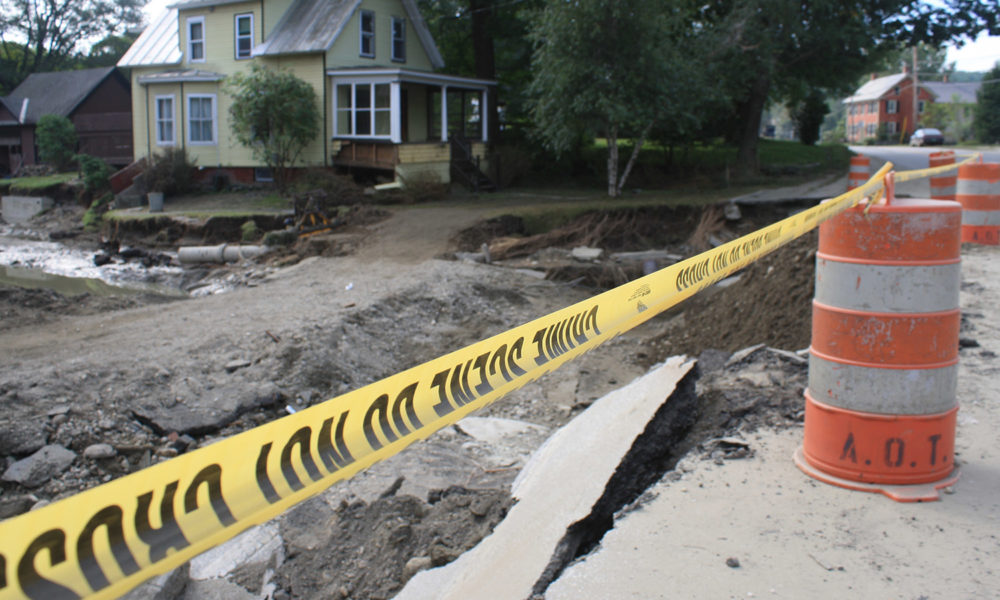Gov. Chris Sununu of New Hampshire got it exactly backwards when he withdrew New Hampshire from the Transportation and Climate Initiative (TCI) by suggesting that the program is unfair to rural communities.
You know what is really unfair to rural communities? Climate change.
Rural communities have some of the greatest potential to benefit from climate-resilient solutions
Rural communities in states like Vermont and New Hampshire face some of the most profound risks when it comes to climate change, particularly when it comes to the vulnerability of our transportation infrastructure. Rural communities also have some of the greatest potential to benefit from climate solutions.
As the 2019 National Climate Assessment states,
“Rural communities face particular geographic and demographic obstacles in responding to and preparing for climate change risks. In particular, physical isolation, limited economic diversity, and higher poverty rates, combined with an aging population, increase the vulnerability of rural communities. Systems of fundamental importance to rural populations are already stressed by remoteness and limited access.”
Vermonters got an early warning of how a warming climate will impact rural transportation in 2011, when Hurricane Irene dumped up to 11 inches of rain throughout Vermont over a two-day period. The storm damaged 2,000 local roads and 500 miles of state roads. It washed out over 300 bridges and blew out over 900 culverts. Hurricane Irene left the residents of 13 Vermont communities stranded for days and even weeks after the storm, requiring supplies to be delivered by helicopter. It left $250 million in damages to Vermont’s transportation infrastructure in its wake.
The number of intense storms in Northeast will rise
The science is clear that Vermont and other states in the Northeast will experience increasingly intense storms as a result of a changing climate. Data presented in the 2018 National Climate Assessment shows the eastern United States has already experienced a 50% increase in extreme rainfall events since the mid-20th century. We need to do more to protect our rural communities from climate change while we also take aggressive steps to reduce our emissions.
While Vermont has made progress in the years following Irene, adapting our rural transportation infrastructure to fit the needs of a changing climate will require considerable additional investment. We need to better manage water flows and improve structurally deficient bridges. Rural communities throughout the Northeast need to look closely at our culverts – those secret heroes beneath our roads that protect our natural ecosystems and allow water to flow without disrupting our transportation networks.
Electric vehicles could save rural residents twice as much as their urban counterparts
Rural drivers also have the greatest potential to benefit from the transition to clean vehicle technologies such as electric vehicles. Drivers living outside of urban areas often have farther to travel to work, shop, and visit a doctor. They have to repair their vehicles more frequently, they produce more carbon emissions per capita, and they spend more money on gasoline. Electric vehicles promise a future of lower emissions, reduced consumer costs, and a more resilient local economy for rural areas.
The good news is that electric vehicle technology has advanced to the point that electric vehicles are now a viable solution for drivers in all communities. Today’s EVs now regularly average over 200 miles per charge, more than enough to cover the daily driving needs of drivers in rural communities. Electric vehicles will soon be available in all vehicle types, with high performance fully electric pickup trucks now on the way from Tesla, Ford and Rivian. While electric vehicles remain somewhat more expensive than conventional vehicles, declining battery costs and support for purchase incentives and EV infrastructure from TCI and other state programs can help make electric vehicles affordable for all residents.
Overall, UCS analysis has found that rural residents have the potential to save up to twice as much as urban residents by making the switch from a conventional sedan to an electric vehicle. These savings are likely to be even greater for drivers of pickup trucks. In Vermont, we estimate that the average driver who trades in a conventional pickup truck for a battery electric version could save over $800 per year in reduced fueling costs.
Bringing clean vehicle technologies to rural areas will not only benefit rural drivers, but it will also improve whole rural economies. Nearly all the money that we spend on gasoline and diesel fuel ultimately leaves our towns and our region, for other parts of the world. As electric vehicles replace the internal combustion engine on our roads, there will be more money in consumers’ pockets – which means more jobs, and more local development for our small towns.
Increasing growth of EV sales in rural areas will require states like Vermont to take a proactive approach towards electrification in rural areas. Such a strategy should include incentives to make EVs affordable for low and moderate-income residents, more charging stations in rural environments, and consumer education and outreach programs.
Rural communities support investments in clean and resilient transportation. One recent poll showed that 80% of rural residents of Vermont support a program similar to TCI.
The Transportation and Climate Initiative cannot solve all the challenges facing rural transportation. But it can be a major source of funding for states like Vermont to begin to address some of the critical transportation issues that will impact rural communities over the next century. Vermont can help bring these benefits to its citizens across the state by committing to participate in TCI and making this program a success for rural communities.

